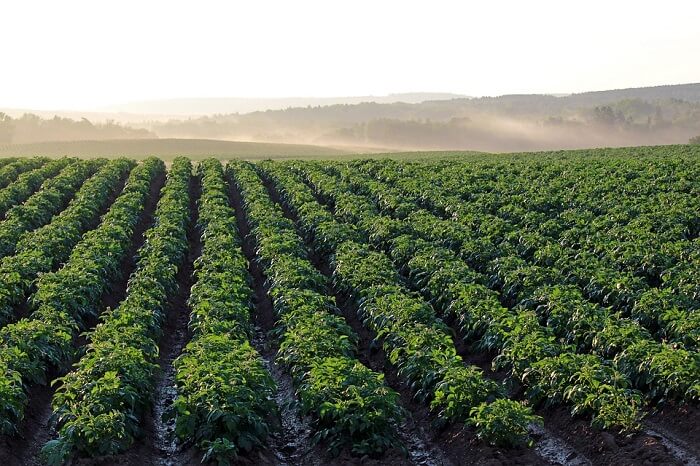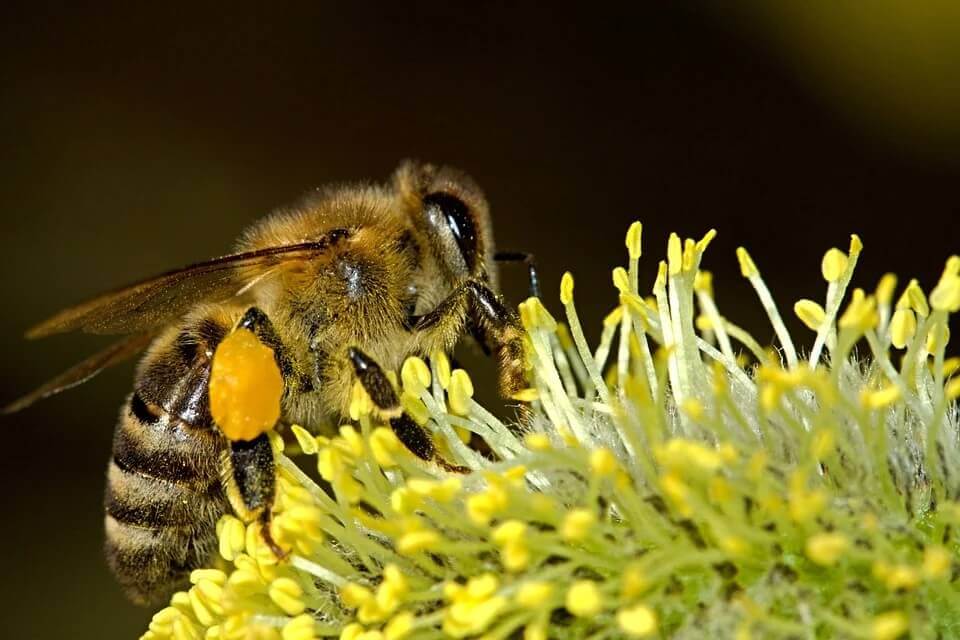Today we will consider the structure of a business plan for growing potatoes on a private farm and familiarize ourselves with all the stages of opening our own enterprise. Every year the agricultural sector is becoming more and more attractive for entrepreneurs. Growing potatoes at home is a familiar practice for any Russian person who has a private house, dacha, homestead plot, vegetable garden or even a small bed.
Surprisingly, three centuries ago, Russia knew nothing about potatoes. This product was brought home by Peter the Great, the innovator and creator of the "window to Europe". Until then, the basis of our human diet was cereals, and now it is difficult to imagine breakfast, lunch, dinner or holiday table, which does not have a crowning dish of potatoes. So why not start grow it for sale? Demand for it is not decreasing, the product is not losing popularity.
Potatoes cannot be called a fastidious plant. The only problem is an army of pests in striped shirts, which annually attack the vegetable gardens on all fronts in order to snack on the juicy green haulm. But even to combat this scourge invented dozens of means: from the usual collection of enemies in buckets and to poisonous substances, which etch the potato tubers themselves before planting and spray the bushes after their sprouting.
Potato business: legal and accounting issues
To grow potatoes and create a business, it is necessary to register your activity. The optimal organizational-legal form in this case is a peasant-farming farm with a transition to the unified agricultural tax (UST, 6% on profits). In order to do this, you need to collect a package of documents:
- registration statement (form p21002),
- a receipt for payment of the state duty,
- application for transfer to a special tax regime
- agreement on the establishment of a CFH, if the farmer is starting a business together with partners.

Business plan for growing and marketing potatoes 📒
To start growing potatoes as a business, you need an impressive start-up capital of 6-7 million rubles. To begin with, it is necessary to conduct a thorough market analysis, study the peculiarities of planting, care and harvesting, identify the main competitors and make a business plan.
Then it is necessary to rent a plot of land, purchase equipment and materials for the construction of outbuildings, hire employees, and purchase the first batch of seed potatoes. About all business nuances we'll consistently tell you more about it.
Market Analysis
Between 2007 and 2017, the amount of potatoes consumed per year increased by 4.6 kg per person. The statistics for 2018 made even medical professionals worried. The norm is considered to be 90 kg of potatoes per person per year, and in our country this figure has increased to 112.6 kg.
There is definitely no shortage of customers for this product. Stable demand is the best indicator for an entrepreneur.
Among the variety of varieties, the most favorable for cultivation are considered "Radonezhsky" and potatoes "Ryabinushka". The first has a ripening period of 70-90 days. On one bush about 6-10 tubers. The yield is 188-330 c/ha. This is a potato with a red peel. It is unpretentious in storage, optimally suited for frying, boiling and salads. It has high flavor qualities.
In the bushes of potatoes of the variety "Ryabinushka" there can be 15-20 tubers. It also does not darken, is suitable for cooking almost any dishes, has a pink skin. The yield of the variety is up to 400 c/ha.
Equipment
Since it is not a simple vegetable garden where manual labor can be used, the farmer will need technical equipment. To reduce costs and start-up capital, equipment can be rented, but later it is better to buy your own tractor, a potato planter, a combine harvester, a sorting line and an inter-row cultivation machine, which will be needed to perch the potato field in the middle of the season.
About 2.5 million rubles will have to be spent on the purchase of equipment.

Personnel
The main person on the farm is the mechanic. A minimum of four laborers will be needed for planting, tending and harvesting. A mechanic must be hired to operate the machinery, and financial calculations will fall on the accountant's shoulders. The field must be guarded during the summer, so there should be 2-3 more guards on staff.
And finally, you will have to hire a manager - a person who will manage the entire staff and competently distribute responsibilities between employees. For such a number of farm workers, the monthly salary fund will be 400,000-550,000 rubles.
Agronomic aspects
An area of 10 hectares will require about 20 tons of seed potatoes. If we take the potato variety "Ryabinushka" as an example, its retail price is 80-100 rubles. If you take potatoes at wholesale price, each kilogram will cost much cheaper than 40-60 rubles. Let's take the minimum price tag, which you will still have to look for at wholesale vegetable bases.
For the first planting, about 800,000 rubles will be needed to purchase a batch of seed potatoes. This and the potatoes harvested later crops need to be stored properlyTherefore, there should be a storage facility on the farm. Construction of a full-fledged room for potato storage will cost 2.5-3 million rubles.
Technology of potato cultivation ☝
Potato yields are determined by several factors:
- soil fertility,
- fertilization,
- pest control methods,
- timely watering and proper field care,
- plant variety,
- selected cultivation technology.
The latter is not worth experimenting with. There are several popular techniques that have long been proven to be effective:
- Dutch growing system,
- Mittleder technique
- "burying" potatoes under straw.
The last method is actively used even in ordinary vegetable gardens where potatoes are grown for personal consumption, not for sale. The Dutch technology is still considered to be the most effective of the three. On the process of cultivation have a minimal mechanical impact, and previously conducted aeration of the soil creates natural ventilation in the soil, which is very useful for the plant. Potatoes are grown practically in natural conditions.
Dutch technology allows you to grow a large number of large tubers on one bush, but even with this technology it is impossible to achieve 100% yields. In addition to factors that humans can influence, there are a number of conditions determined by nature.

Potato planting
Proper planting of potatoes is the key to a good harvest. It is important to follow the rules of bed formation. The depth of the hole should not exceed 0.8-0.85 m. It is necessary to maintain a distance of 0.3 m between them in the row. The rows themselves should also not be dug too close. A gap of 0.7-0.8 m should be maintained between them.
For every 100 square meters you should not plant more than 550-600 potato bushes. Seed potatoes should be placed in the holes with the sprouts facing upwards. This way they will sprout faster.
Care and harvesting
Potato bushes are unpretentious, so there is no need to water them at dawn once every couple of days, like cucumbers or tomatoes. It is enough to carry out the irrigation procedure three times: after the emergence of sprouts, just before flowering and after it. In exceptional cases, the frequency of watering can be increased, if, for example, in the region came an unprecedentedly dry summer, which in recent years is no longer surprising to anyone.
Potato bushes should be perched. Loosening the soil will strengthen the stems, increase the number of tubers, get rid of weeds and protect the lower part of the plant from the harmful effects of climatic conditions.
The first perching is carried out after the sprouts appear 2-4 weeks after planting. After approximately the same period, the soil is loosened again.
You should not forget about the treatment of potatoes from pests. Here you cannot do without toxic chemicals. It is better to carry out the first treatment before the appearance of inflorescences on the bushes. Harvest tubers for planting the next year should be harvested in the first days of August. The rest of the potatoes for sale are dug up a month later in the first days of September.
Storage
To store the harvested crop, only a dry room with a temperature of at least 17 degrees Celsius is used. After two weeks, it can be gradually reduced to 5 degrees. The potatoes must be protected from sunlight.
Increased humidity will cause the color of the peel to change. The potatoes will take on a greenish color. It will be suitable for planting in the future, but such goods will not be offered for sale.
Realization of goods
For a farmer, the most profitable period for selling potatoes is winter. In the fall, prices for the product decrease due to high competition, so it is extremely important to equip a good warehouse where the crop can be stored for several months.
Potatoes can be sold wholesale and retail. In the second case, the markup, and therefore earnings, will be higher. For wholesale sales, it is better to conclude a contract with a large buyer, a retail chain or simply sell products through a wholesale base.

Financial plan and expenses 💰
Renting a plot of land, buying equipment and machinery, the first batch of seed potatoes, erecting outbuildings, hiring employees, and processing documents - all this will cost the businessman 6-7 million rubles. Its annual expenses will be in the range of 1.5-2 million rubles. These may include::
- payroll,
- payment of taxes,
- utility bills,
- procurement of consumables,
- of fuel for the machinery,
- equipment repair and maintenance.
Revenues and risks
The estimated annual profit in the business plan for potato cultivation is 4.5-5 million rubles. If you subtract expenses from this amount, the net profit will be about 2.5-3 million rubles. Taking into account the costs at the start, investments will be fully recouped in the third year of doing business.
Of course, such bright prospects will only become a reality if the farmer manages to sell the entire harvest. The main risks are related to the possible loss of funds, which can be provoked by high competition, fluctuations in product prices, crop failure or inexperience of the farmer himself.








